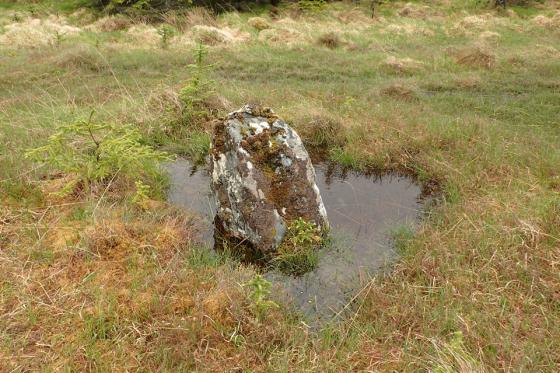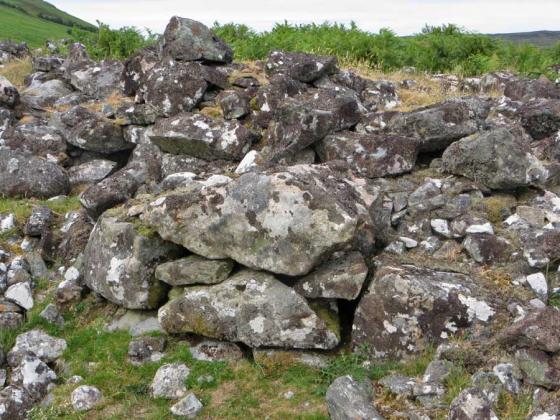Set overlooking the beguiling waters of Loch Naver in the desolate, yet ultimately captivating wastes of Strathnaver, the shattered remnants of this chambered cairn (visited May 2009 but photo just re-discovered) form perhaps the most moving – in the human context – of all the sites I’ve yet seen.
Much of this emotional undercurrent is no doubt due to the feeling of isolation engendered here, a state of mind amplified many times over by the sheer starkness of a brutal terrain seen through heavily overcast skies laced with drizzle. The silence is overpowering, the senses overloaded trying to cope with such a novel eventuality in today’s world of incessant noise and information overload – much of it sheer nonsense.
However Grumbeg has another story to tell, strictly speaking outside the parameters of TMA, but highly relevant to a visit here nonetheless. For this hillside was also the site of a 19th century village (the implied continuity of human occupation is mind blowing), the community forcibly evicted during the infamous ‘Highland Clearances’ of 1814. This shameful period of our relatively recent history saw agents of the Countess of Sutherland resorting to barbarous methods to destroy whole communities – and all because turning over the land to sheep pasture would bring in more profit. The burial ground overlooking Loch Naver mirrors its Neolithic counterpart, as if asking ‘how did it ever come to this?‘
Standing in the progress of Empire builders with a fortune to make, the inhabitants of Grumbeg never stood a chance. Now the Empire has gone, too, while the remnants of the chambered cairn continue to surmount it’s hilltop. Have we really come so far? A question a Bronze Age inhabitant of this site might well be well justified to ask.....































